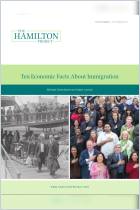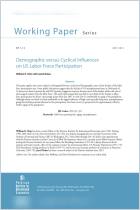Зарегистрируйтесь на getAbstract, чтобы получить доступ к этому краткому изложению.

Зарегистрируйтесь на getAbstract, чтобы получить доступ к этому краткому изложению.
Michael Greenstone and Adam Looney
The Lasting Effects of the Great Recession
Six Million Missing Workers and a New Economic Normal
The Hamilton Project, 2013
Что внутри?
The metric for measuring US unemployment overlooks some six million people.
Recommendation
The Federal Reserve monitors the US jobless rate to gauge economic recovery, but that measure fails to account for the “six million missing workers” who have dropped out of the US workforce as a result of the recession. Ignoring this discrepancy implies “settling for a new normal.” Economists Michael Greenstone and Adam Looney have coined an innovative, provocative metric to calculate recovery that they call the “jobs gap”; alas, the US might not fill the gap until 2021. getAbstract recommends the thesis to all US economy-watchers.
Summary
About the Authors
Michael Greenstone is a professor of environmental economics at MIT. Adam Looney is a senior economics fellow at the Brookings Institution.
























Comment on this summary